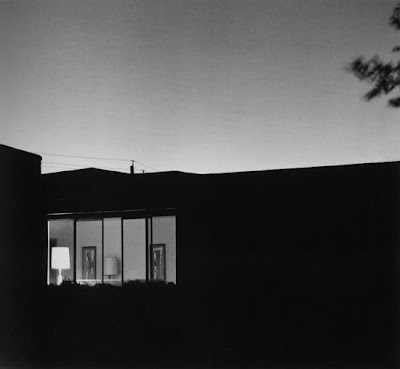 Robert Adams (1937) è considerato un maestro della fotografia americana. Quest’anno l’università di Yale gli dedicherà un libro e una retrospettiva che girerà l’America e l’Europa. Di seguito riporto un brano dell’intervista che Joshua Chuang, il curatore per la fotografica di Yale, gli ha fatto sull’ultimo numero di Aperture.
Robert Adams (1937) è considerato un maestro della fotografia americana. Quest’anno l’università di Yale gli dedicherà un libro e una retrospettiva che girerà l’America e l’Europa. Di seguito riporto un brano dell’intervista che Joshua Chuang, il curatore per la fotografica di Yale, gli ha fatto sull’ultimo numero di Aperture.
JOSHUA CHUANG: You wrote in 1977, in the introduction to denver, that the city’s inhabitants “partecipate in urban chaos” but are themselves “admirable”. Do you still believe this?
ROBERT ADAMS: I’d probably be more specific about the people I endorse. And inclined to note the tragic nature that we all have in common. In a recent Paris Review interview the writer Marilynne Robinson was asked if she worried about being too pessimistic. Her reply was “I worry that I’m not pessimistic enough”. I share that feeling. Although neither she or any artist is without hope. If they were, they wouldn’t bother.
JOSHUA CHUANG: Dorothea Lange once said that she hoped that generation of photographers following hers would focus on the American city and what happening in the suburbs. Is there a particular subject you’d like to see the next generation take on?
ROBERT ADAMS: What she wanted still seems right, but it remains a tall order. One of the things that I most hope to find when I speak with young photographers is a readiness to ask almost impossible things of themselves, the sort of things that demand three or four years and that might result in fifty or seventy-five pictures of an important, life-size subject. I want to repeat to them Miguel de Unamuno’s blessing: “May God deny you peace but give you glory”.
Let me add one thing that might at first seem at odds with my wanting to toughen up Summer Nights – that the goal of art is affirmation. Of course if you get affirmation on the cheap it can be easy dismissed, which is why I wanted Summer Nights to be more than a record of childhood innocence. But the purpose of art is, in the end, to find beauty, and by that share an intuition of promise.
This past spring there was a show titled Into the Sunset at the Museum of Modern Art in New York. It was about phography’s picture of the American West, and thought I didn’t see the exhibition I did study the catalog. It raised an important problem that confronts everybody, East and West. On the one hand there were landscapes, the more recent of which, my own included, documented worn, abused places. Together with these views there were pictures of people, and the more recent of the seemed, in the main, to be portraits of the lost. The issue raised by the show seemed to be whether are affirmable days or places in our deteriorating world. Are there scenes in life, right now, for which we might conceivably be thankful? Is there grounds now and then for an un-ironic smile?
Every artist and would be artist should, I think, recognize a responsibility to try, without lying, to answer those questions with a yes.